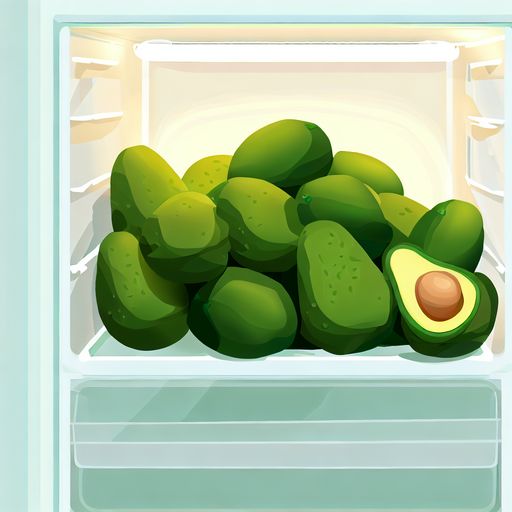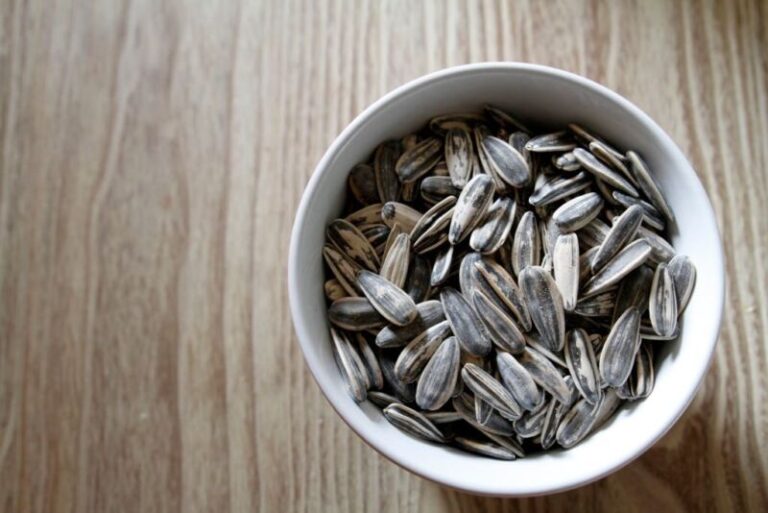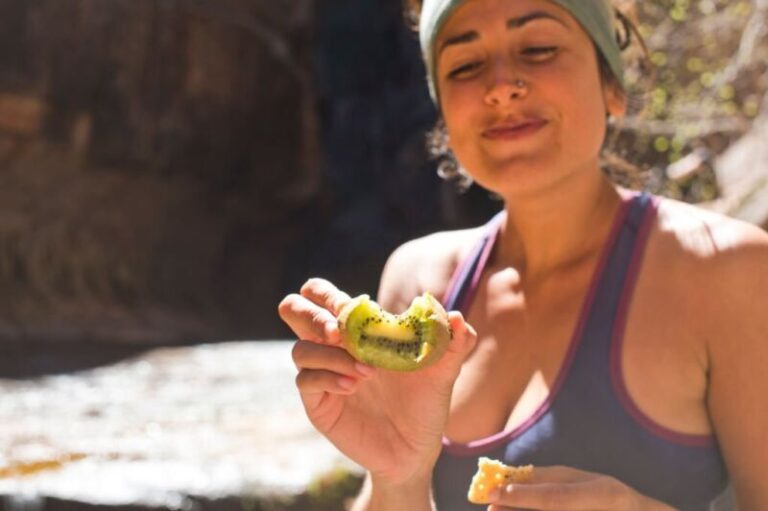Fridge vs. Counter: What’s the Best Place to Store Avocados?
Avocados are a delicious and nutritious fruit that can be incorporated into various dishes, from salads and sandwiches to dips, smoothies, and desserts. However, one of the most frustrating things about avocados is their tendency to spoil quickly once ripe. Finding that perfect window of ripeness where the avocado is ready to eat can be a delicate balancing act. This often leads to disappointment when your avocados become overripe, brown, and mushy before you get a chance to enjoy them.
When it comes to storing avocados, most people are faced with the decision of putting them in the refrigerator or leaving them out on the kitchen counter. But which method actually keeps avocados fresh for longer? There are various factors regarding avocado ripening and preservation that determine whether the fridge or the counter is best.
Factors That Accelerate Avocado Ripening
To understand how to slow down over-ripening, it helps to first look at what causes avocados to ripen quickly in the first place:
Avocados only begin ripening after they are picked from the tree. The ripening process takes around 1-2 weeks, as avocados harvested from the orchard are hard, green, and unripe. Avocado skins turn darker as chlorophyll breaks down, soften, and the flavor develops into the creamy, rich taste we associate with perfect avocados.
Avocados produce ethylene gas, which is a naturally occurring plant hormone. Ethylene triggers the ripening process, so avocados essentially speed up their own ripening through ethylene production.
Ethylene-emitting fruits like bananas, apples, pears, tomatoes, and stone fruit can accelerate nearby avocado ripening when stored together, as they give off high levels of ethylene.
Warmer temperatures activate the avocado’s metabolism, ethylene production, and enzymatic activity, quickening the entire ripening progression. Cooler temperatures have the opposite effect of slowing down ripening.
Softer, riper avocados become more susceptible to mechanical damage like bruising through actions like squeezing or dropping. Bruising damages the cellular structure which speeds up deterioration.
Bruising can happen through mechanical injury during commercial harvesting, packaging, and transportation, or improper home storage methods. Pressing ripe avocados with fingers when testing for ripeness can also cause bruising.
How Long Do Avocados Last on the Counter?
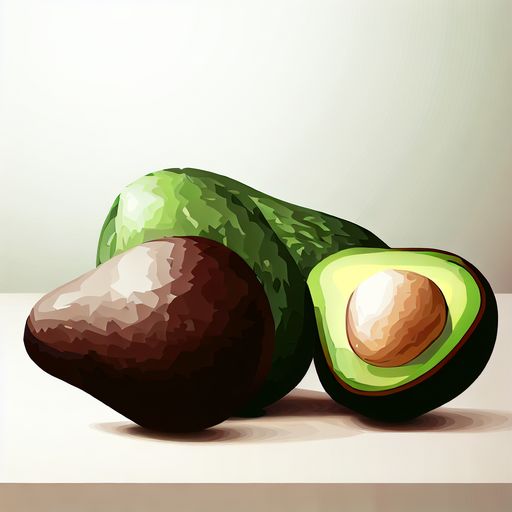
According to eatbydate.com, ripe, uncut avocados can be kept at room temperature on the countertop for approximately 3-4 days before spoiling. The higher humidity of the countertop accelerates ripening compared to the dry environment of the refrigerator. After 4 days, oxidation and mold growth rapidly increase, quickly deteriorating flavor and texture.
Leaving avocados on the counter once ripe also makes them prone to bruising through accidental bumps, drops or handling which hastens spoilage. Ripe avocados should be handled gently with clean and dry hands to minimize damage. Checking ripeness by holding and squeezing promotes detrimental bruising.
How Long Do Avocados Last in the Fridge?
Ripe, uncut avocados can last up to 7-10 days when stored in the refrigerator. The cool environment of the fridge slows down the metabolic processes and ethylene production in avocados that lead to ripening and over-ripening.
For whole, hard, unripe avocados, the refrigerator is not ideal for ripening as the temperature is too low to properly complete the ripening process. Cold temperatures interfere with the enzymatic activity needed to break down starches into sugars and develop flavor.
Shelf Life of Cut Avocados
Once you slice into an avocado and expose the flesh to air, its lifespan is significantly shortened. According to the USDA, cut avocado will only stay fresh for 2-3 days when stored properly in the refrigerator.
Cut avocado should not be left out at room temperature, as warmth and air exposure lead to rapid oxidation and browning. Prepare only the portion needed for a recipe or meal, store the remainder intact with the pit still in place.
To maximize the shelf life of exposed avocado flesh, seal it in an airtight container or plastic wrap, pressing directly onto the surface to limit air contact. Refrigeration is critical for preserving cut avocados. Some additional tips for cut avocado storage include:
- Sprinkling lemon or lime juice over exposed flesh to slow oxidation.
- Placing a piece of damp paper towel or onion slice under the avocado in the container to help retain moisture.
- Using an airtight container and minimizing excess air space.
Shelf Life of Mashed Avocado
Once avocado is mashed into guacamole, dip, or spread, its shelf life is reduced to just 1-2 days in the refrigerator. The increased surface area exposed to air speeds up browning. To extend the lifespan of guacamole and mashed avocados:
- Press plastic wrap directly onto the surface to limit air contact.
- Mix in acidic lemon or lime juice as this acids slow oxidation.
- Pack into an airtight container removing air pockets.
- Consider adding onions or chili peppers as they contain antioxidants.
Storing Avocados in the Fridge
Placing ripe avocados in the refrigerator can approximately double their shelf life from 3-4 days at room temperature to 7-10 days. The low temperatures of the refrigerator slow down the internal changes in the fruit that lead to decay. Consider the following tips for fridge storage:
- Allow avocados to ripen at room temperature until ready to eat before chilling in the fridge.
- Use avocados within 3-4 days of refrigerating for best quality and flavor.
- Keep avocados in the high-humidity crisper drawer, away from ethylene-producing fruits.
- Store whole, uncut avocados rather than halves or slices to prolong refrigerated lifespan.
For cut avocado, the pit should remain lodged in one half with the flesh exposed on the other half. This inhibits browning enzymes and prevents oxygen from penetrating deep into the fruit. Wrap tightly in plastic wrap before refrigerating cut sides.
Methods to Prevent Avocado Browning
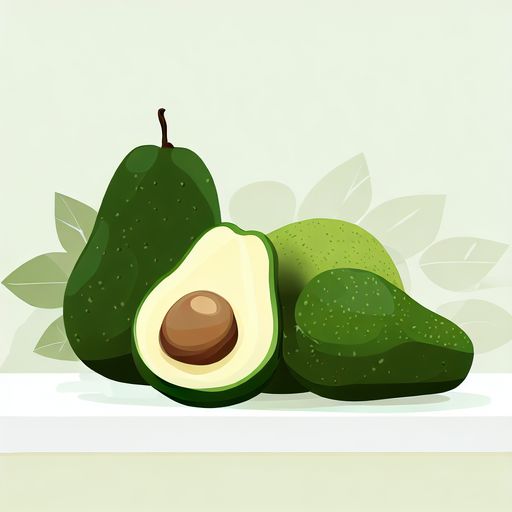
Once sliced open, avocados start rapidly oxidizing and darkening when the flesh interacts with oxygen in the air. Here are some effective methods to prevent undesirable browning of stored avocados:
Lemon or Lime Juice – Sprinkling acidic citrus juice over exposed avocado flesh slows down the oxidation process that causes browning. The antioxidants and acidity in the juice hinder the enzymes that trigger browning.
Onion – Putting red onion wedges in the storage container creates an environment that keeps avocado from browning. Onion contains sulfur-containing amino acids that stop oxidation.
Oil – Brushing a thin layer of olive oil, vegetable oil, or canola oil acts as a protective barrier between the avocado flesh and the air. This prevents oxygen from oxidizing enzymes and arrest browning.
Water Immersion – Submerging an avocado half in water (with the pit still lodged in place) stops air from reaching the exposed fruit, stopping the oxidization process. Change the water daily.
Freezing – Frozen storage stops ripening and browning through suspended animation at very low temperatures. To freeze, coat the flesh with lemon juice, store in an airtight bag removing air, and thaw before use.
Using Overripe Avocados
While refrigeration can extend the edible lifespan of avocados, they will eventually pass their prime eating stage. Browns spots, mushy consistency, or bad odors indicate an overripe fruit. But before throwing them out, consider these tasty ways to use up overripe avocados:
- Mash into a smoothie, milkshake, or ice cream for added creaminess
- Blend into salad dressings, dips, guacamole, or sauces
- Bake into brownies, cookies, muffins, and quick breads
- Mix into your favorite pasta sauce, chili recipe or taco filling
- Mash over toast, potato, rice or pasta for extra richness
The high moisture content in avocados makes them ideal for adding creaminess and moisture retention to various dishes and desserts. Overripe avocados can salvage an otherwise spoiled fruit.
Conclusion
Proper avocado storage comes down to managing temperature, ripeness stage, and exposure to air and ethylene gas. Allowing avocados to ripen at room temperature then storing ripe fruits in the refrigerator extends shelf life. Refrigeration alone can prolong an already ripe avocado’s edibility up to 10 days. Precautions like adding lemon juice and minimizing air contact through tight sealing or immersion in water help reduce oxidation and browning of cut avocados. With the right handling and storage methods, avocados can retain their delicious flavor and smooth texture for longer enjoyment.
